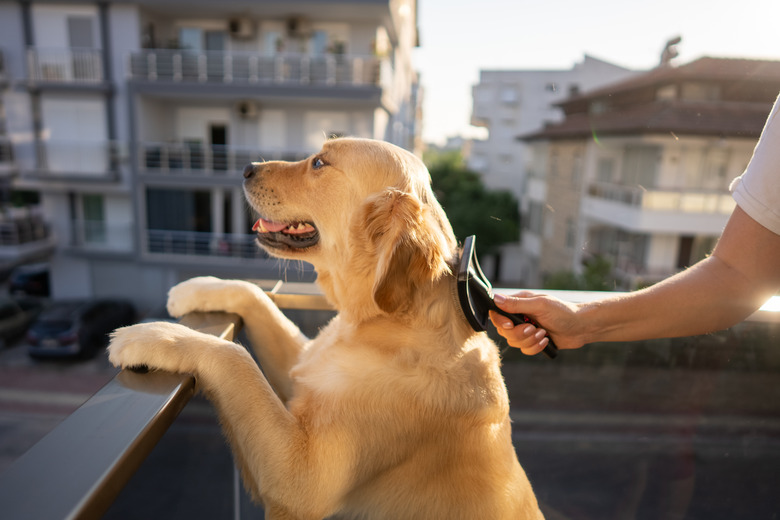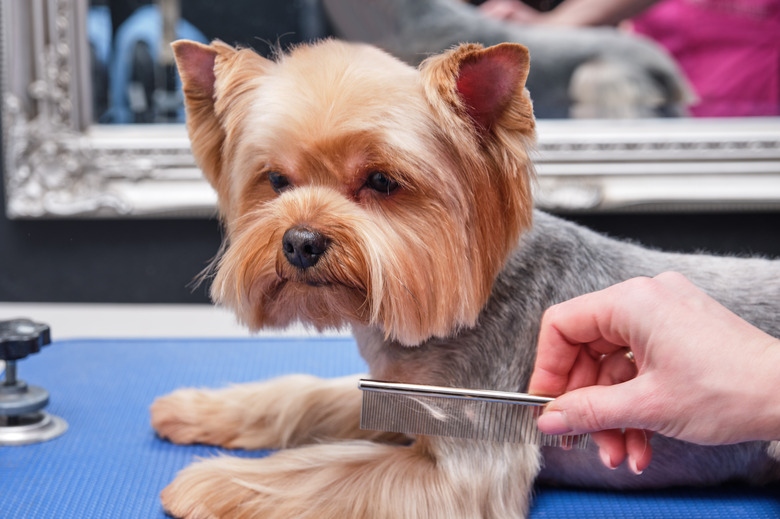Can You Over-Brush Your Dog?
Depending on your definition of "too much," yes, you can over-brush your dog. If you're talking about taking a few (or even a couple dozen) extra strokes and damaging your dog's hair, no, you don't necessarily need to worry about that.
Brushing with too much pressure for too long, however, can damage your dog's skin and cause pain and other issues. Learning how to properly brush your dog is something every pet parent should learn as soon as they adopt the animal.
Following a few basic guidelines will help you make sure you keep your dog groomed properly and painlessly, and won't ever leave you thinking, "I brushed my dog too hard."
Learn your breed’s needs
Learn
your breed's needs
The first step in properly brushing a dog is to learn the dog's grooming needs, suggests the American Kennel Club. For example, some dogs have a double coat, some have long hair, others have short coats, some have thick, some have thin hair, and so on.
The type of hair your dog has will determine how often your pet needs to be not only brushed, but also bathed as well. For example, dogs with long hair will need to be brushed more often than dogs with short hair to keep the hair from matting and tangling. If your dog has short hair, using the right dog brush for short hair will allow you to get dirt and tangles out of the hair most effectively, without excessive brushing.
Meet with a groomer
Meet with a groomer
Even if you don't plan on using a professional groomer on a regular basis, it might be a good idea to hire one for a consultation to discuss your dog's brushing needs, recommend the right tools, and show you the proper technique. She can even show you how to set up a regular grooming area in your home.
For example, brushing lightly from side to side is much different from brushing downward and putting pressure against the skin. A groomer will also show you how to brush in the direction of the dog's natural hair growth pattern, rather than against it. You should also thoroughly check your dog for any red or irritated skin and avoid brushing that area.
You might need to comb fleas out of your dog before doing its regular brushing, so you'll need a comb and brush. If your pet doesn't like being brushed, a groomer can show you how to hold and calm your pet while he's being groomed. If you learn to do it right, after a while your dog might even look forward to being brushed.
If you don't have access to a groomer, ask your vet or vet tech to show you how to properly brush your dog. Ask about a washing and brushing schedule, and if there are any signs you should look for that you're not brushing correctly.
Grooming vs. cleaning
Grooming
vs. cleaning
If you have an indoor dog, your brushing will mostly be grooming, helping to keep the hair untangled and free from any debris and pests. If you have an outdoor dog who gets into messes, your brushing might require you to get larger, dried-on pieces of debris out. This is where you can possibly get into over-brushing. If you try to remove debris or tangles by applying more pressure with a brush, that can cause your dog pain. You can end up pulling the hair against the skin. If you have a short-haired dog and you aggressively and continuously try to rid its coat of a foreign object, that can hurt the skin also.
In addition to regular brushing, your dog might need to have dead hair removed, mats and tangles addressed, and hair trimmed and washed. These fall into the category of grooming, so make sure you do more than just run a brush through your dog's coat.
Use the correct tools
Use
the correct tools
All dog brushes aren't the same — you can buy a dog brush for short hair or one for long hair. You can buy a brush that's built into a glove that makes your dog think you're petting it, rather than brushing it. Learn the difference between rubber and wire brushes, curry combs, slickers, and pin brushes. You might want to apply a grooming spray to make brushing easier.
Never use your brush as a substitute for a cleaning tool. Yes, brushes are intended to help remove light debris and help clean a coat, but they aren't made for removing clumps of dried mud, leaves, gum, feces, or other large pieces of debris. Use a comb, tweezers, or scissors to gently remove items from your dog's coat, rather than trying to use a hard brushing motion until the item pulls free.

